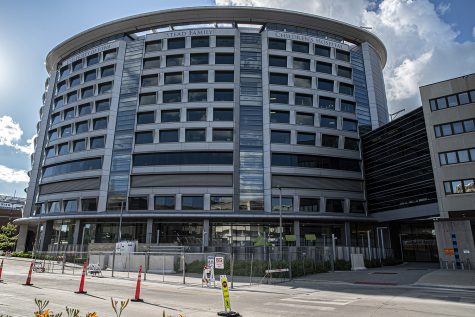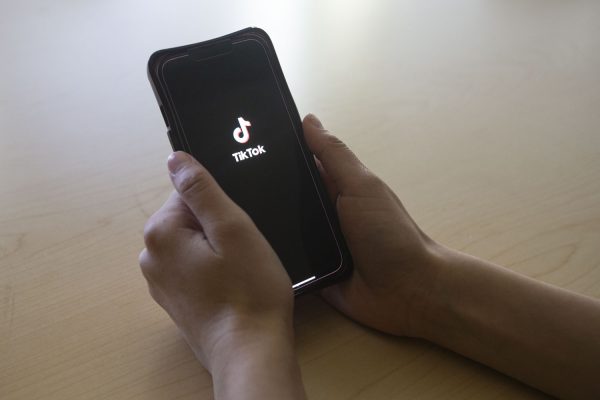UI researchers prevent nerve damage for chemotherapy patients
UI researchers have discovered a way to prevent nerve damage caused by chemotherapy drugs and reduce pain in cancer patients and survivors.
The Old Capitol is seen on Thursday, Nov. 30, 2017.
October 23, 2018
After two years of research, researchers at the University of Iowa and Oregon Health & Science University appear to have discovered a way to prevent nerve damage caused by chemotherapy drugs.
Their findings were published in the Proceedings of the National Academy of Sciences. They detailed that a new study, involving a drug called FK866 and a molecule called NAR, forces neurons to use an alternative biosynthesis pathway in patients to protect nerves from damage and to lessen pain.
“This is a basic science study, but it has important clinical applications,” said Lee Kraus, a professor from the University of Texas Southwestern Medical Center who reviewed the scientific paper. “This is an important finding, because it could provide some hope for how we might figure out how to deal with chemotherapy-induced peripheral neuropathy.”
RELATED: UIHC planning on using Vitamin C to fight cancer
Chemotherapy-induced peripheral neuropathy is often a painful effect of many anti-cancer drugs. The chemotherapy damages nerve fibers and can decrease quality of life for cancer patients and survivors.
UI Professor and study coauthor Charles Brenner, the head of the Biochemistry Department in the Carver College of Medicine, said the discovery began some time ago.
He told The Daily Iowan in an email that 14 years ago, he found a new form of vitamin B3 that had a unique pathway to produce NAD, a regulator of cell metabolism required for all cells to function.
Since then, his team has made discoveries that helped them to determine many types of metabolic stress disturb the NAD system.
Brenner said the study found that another NAD precursor, NAR, paired with FK866, was even more neuro-protective than vitamin B3.
It also found that an NAD precursor called NMN is neurotoxic and damaging.
“If that sounds technical, it’s because it is,” Brenner said. “Essentially, we are finding that protecting a nerve’s NAD is really important.”
Hui-wen Liu, a postdoctoral researcher at Oregon Health & Science University and coauthor of the study, said it is still unclear how NMN damages neurons. She said part of the study’s next steps will be finding out why the accumulation of NMN causes pain in patients undergoing chemotherapy.
According to the findings, the combination of FK866 and NAR used in the new study practically ended all NMN synthesis because it forced neurons to use a different biosynthesis pathway that bypassed NMN formation. This alternative pathway protected nerves from damage caused by chemotherapy.
“By providing the cells with NAR in combination with NMN, we can actually reroute the NAD biosynthesis in the cell,” Lui said. “In that way, we are supporting the cells with NAD without having NMN biosynthesis.”
While Lui said there is still research to be done, the results of the study largely support the idea that the accumulation of NMN causes nerve damage. The published findings of the study suggest a potential therapeutic strategy for treating it safely and effectively.
“We are optimistic that formulations of NR and NR-related cocktails such as we reported in the … paper will help patients, but more research is needed to establish safety and optimize our approaches for efficacy,” Brenner said.




















